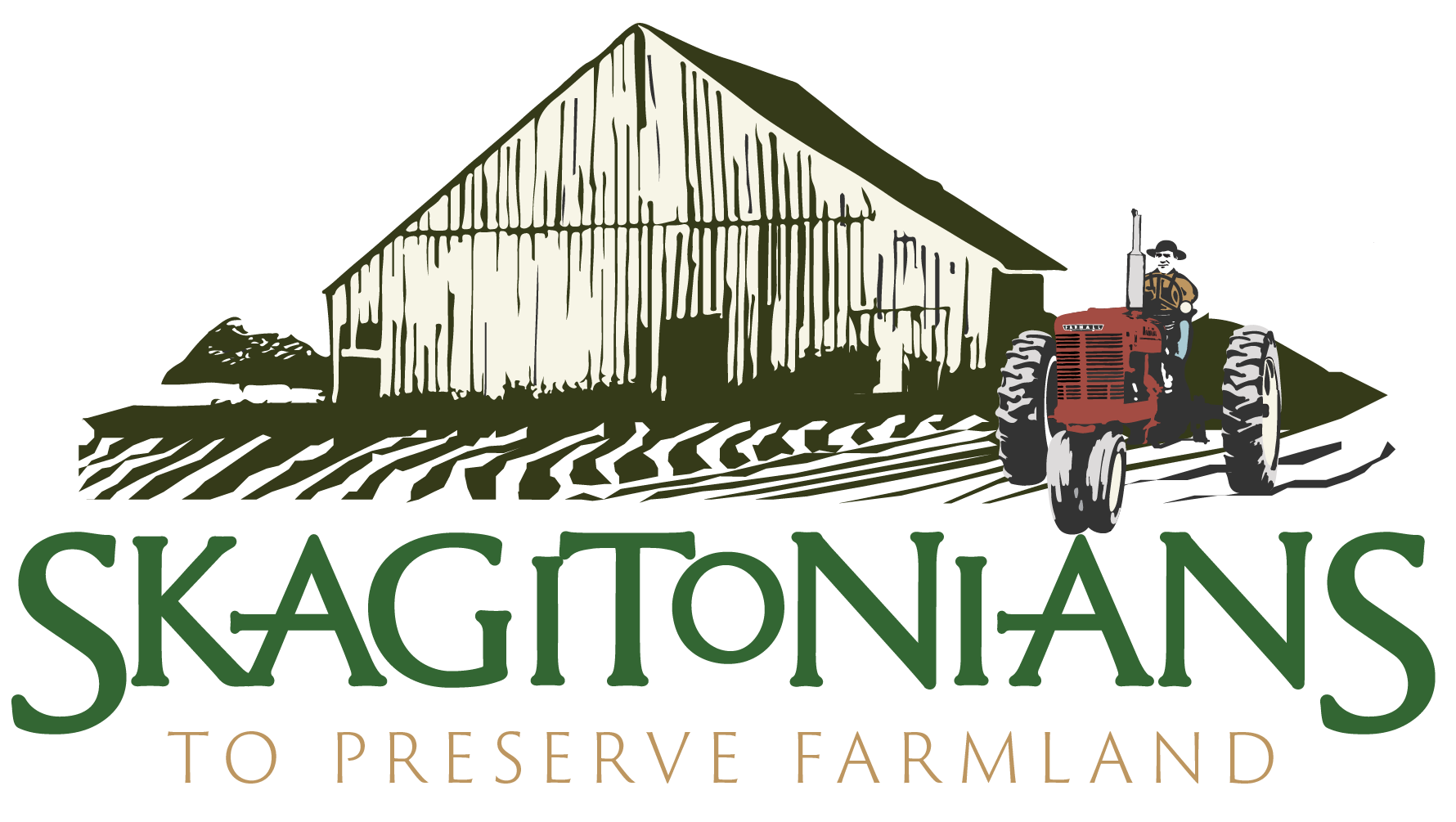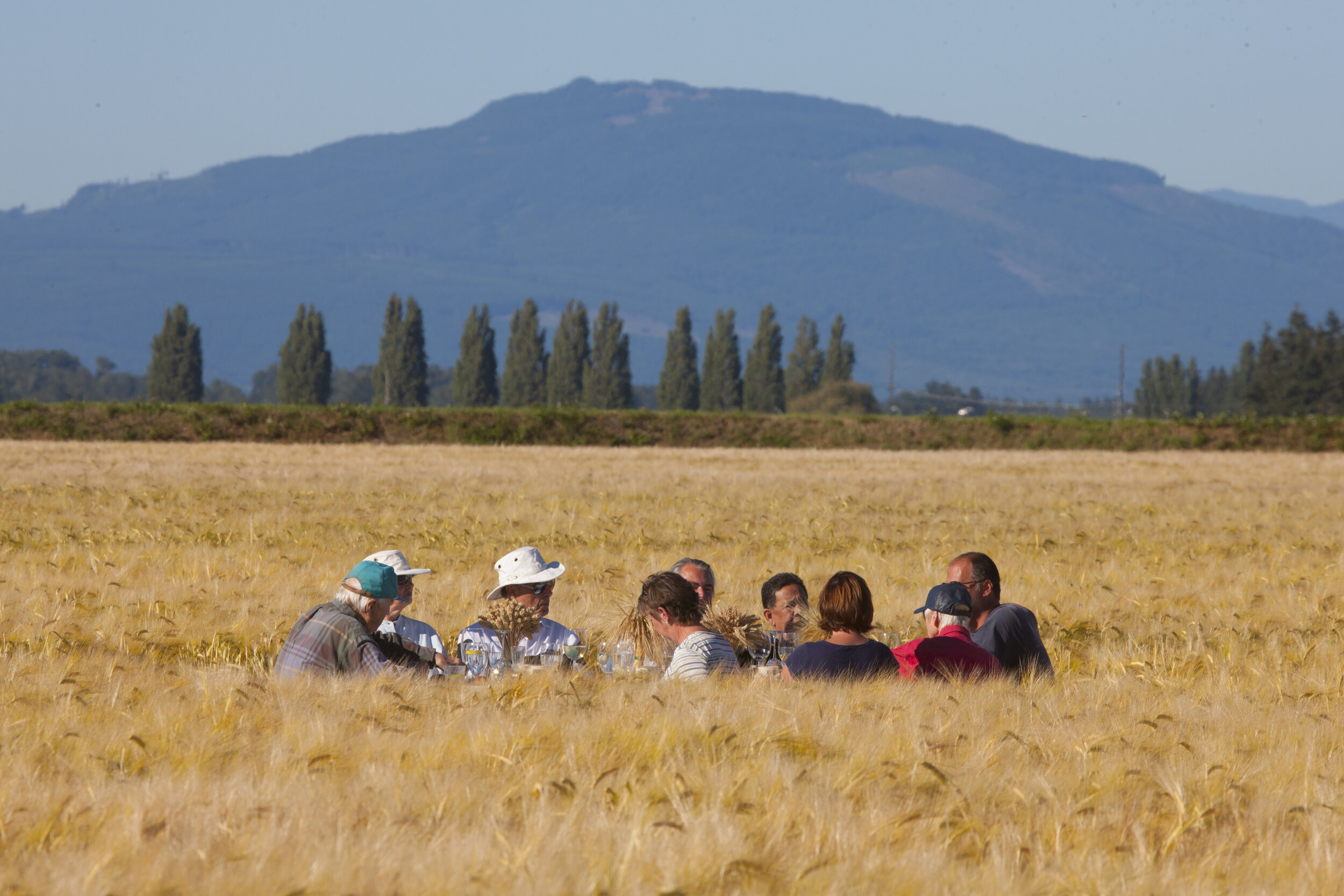Current and Evolving Agritourism in Skagit County
Skagit County is a vibrant, highly productive agricultural hub that, with Whatcom County to the north, stands as the last two remaining fully functioning agricultural economies in the entire Puget Sound region.
The acknowledgement of this status and the desire to protect it run deep in Skagit County.
The areas zoned Ag-NRL (Agriculture-Natural Resource Lands) by Skagit County are cited in the County Code with the following purpose, "…to provide land for continued farming activities, conserve agricultural land, and reaffirm agricultural use, activities and operations as the primary use of the district. Non-agricultural uses are allowed only as accessory uses to the primary use of the land for agricultural purposes."
The code goes on to say, "The district is composed mainly of low flat land with highly productive soil and is the very essence of the County's farming heritage and character."
“The long-term trend appears to be toward a small number of very large, profitable operations and a large number of very small operations that focus on agritourism and other supplemental activities for their income”
But, things change. Both farming heritage and character are responding to forces that have caused a shift in the makeup of Skagit Valley farming. Very large farms (500+ acres) have taken a tiny drop in numbers, but are bigger on average.
Showing significant decline in their overall numbers are medium-size (50-499 acres) and small (10-49 acres) farms, having declined by 31 and 19 percent, respectively, from 2007 to 2017.
A fourth group, known as very small farms of under 10 acres, has grown in numbers by 19 percent. That's important, because when it comes to the issue at hand, size matters.
According to Skagit County's draft Agritourism Situation Assessment, "The long-term trend appears to be toward a small number of very large, profitable operations and a large number of very small operations that focus on agritourism and other supplemental activities for their income."
Agritourism Defined, Sort of
The term agritourism means, among other things, farm or ranch-based tourism. Think of farm stands, u-pick operations, on-the-farm tasting rooms, and display gardens. All of these ventures exist under the larger agricultural umbrella of the farm or ranch.
Contrast that to rural tourism that can take place on any unincorporated rural location and does not center on, or even need, agriculture. Where one overlaps with the other, unintended consequences—even damaging consequences—may ensue.
Agritourism Is Very Attractive Under Certain Conditions
In a county known to produce upwards of 90 different commercial crops on an annual basis, a very large farm is typically diverse in output and stands a reasonable chance of being financially solid. Contrast that to very small farms that, even with a successful agricultural operation, cannot produce the revenue required to cover their year solely on farming proceeds.
For farms such as these developing additional income streams may well be the only way they can afford to farm at all.
Enter Agritourism
There is no question that an agritourism enterprise can maximize the revenue of a very small farming venture. Again according to the County's draft assessment, "…national data shows that small farms account for only 14 percent of the value of farm products sold by U.S. farmers, but 54 percent of agritourism receipts and 57 percent of farm direct marketing revenue."
Obviously, additional income is the driver here, but farmers engaged in agritourism can rightfully claim to provide a service to the community by enticing visitors to their site (and thereby to others in the area) and by educating the public about farming and agriculture.
But, here's the rub. All these benefits are real, but consideration must be given to the potential costs. These include permanent conversion of very limited farmland to non-farming uses, like parking.
It includes businesses that are incompatible with a neighboring farmer's operations as protected under the Right-to-Farm Ordinance (farmers have very limited windows in which to prepare, plant, spray and harvest their crops; it is not possible to curtail such work so that an agritourism venue is not inconvenienced).
Other issues include increased traffic on roads not meant for such volume, sanitation, noise and hours of operation, and signage.
Even if one site does very little damage, an accumulation of sites can, by their sheer numbers, escalate the issue. All these impinge on the primary purpose of the ag zone.
What to Do
The County already has good policies in place, but the time has come to reassess whether those policies meet the evolving trends in agritourism.
One area that needs review is enforcement. Currently it requires a triggering complaint. There is no protocol in place to confirm proper adherence to permits without neighbor ratting out neighbor.
A more comprehensive enforcement system is needed so that every stakeholder knows and abides by the same rules.
Over the next few months, Skagit County's Department of Planning and Community Development Services will be completing an extensive study to, in their words, "…develop a common understanding of agritourism and work with planners to propose amendments to the County Comprehensive Plan, land use map and development code to address agritourism."
The County has engaged stakeholders and the public in this effort. (SPF has also conducted several forums on the topic with farmers, business owners, government representatives and others.)
The Issue As We See It
On the face of it, agritourism has an increasingly important role to play in the future of Skagit County agriculture. It's easy to understand how enriching such enterprises are to the operator and visitor. They go a long way toward supporting such movements as "Know your food, Know your farmer" while increasing revenues with direct sales.
For the visitor it's the produce plus the irreplaceable opportunity to be educated, entertained and refreshed by venturing out to the source.
We believe agritourism in Skagit County needs to meet at least these five characteristics:
Be tied to an existing on-site farming operation
Attract members of the public to visit a working farm operation
Is not a detriment to surrounding agricultural operations and/or practices
Is designed to supplement existing farm income
Provides recreation, entertainment, and/or educational experiences to visitors that promotes and enhances Skagit agriculture overall
Big A, little t
According to the county, there are more than 60 agricultural producers in Skagit County participating in some form of agritourism. There's nothing to indicate that more won't be coming. The county and all concerned parties have a lot to ponder, evaluate and decide.
But, as long as the first and greatest emphasis is put on the Big A (Agri) and the subordinate emphasis is on the little t (tourism), we are committed to supporting policies and regulations that will support all scales and types of farms in Skagit County for generations to come.
By Teresa Bennett: info@skagitonians.org





